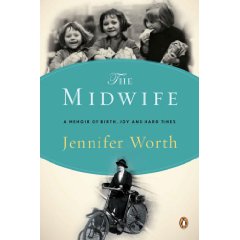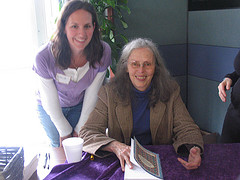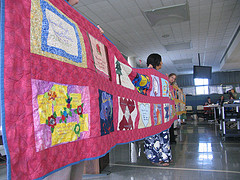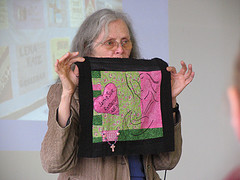A Rave About Midwives
 I had my first prenatal appointment today with the midwife group that I see. The birth center is downtown which is about 35 minutes from where we live. As I was driving I got teary because I knew that when I got to the appointment I would feel very cared for. I wouldn’t have to put on a positive, faith-filled front. I knew I could let my guard down and share my concerns and worries. I wasn’t toting all the kids with me so I wouldn’t have to play mommy either. It felt nice that I wouldn’t have to reciprocate any questions. I had the luxury of going somewhere that was just for me.
I had my first prenatal appointment today with the midwife group that I see. The birth center is downtown which is about 35 minutes from where we live. As I was driving I got teary because I knew that when I got to the appointment I would feel very cared for. I wouldn’t have to put on a positive, faith-filled front. I knew I could let my guard down and share my concerns and worries. I wasn’t toting all the kids with me so I wouldn’t have to play mommy either. It felt nice that I wouldn’t have to reciprocate any questions. I had the luxury of going somewhere that was just for me.
It sounds sort of selfish, I know. It felt more like I was going to a counseling appointment than a prenatal appointment. I have a lot on my plate right now. We are downsizing in a MAJOR way, selling more things than we are keeping, and moving across the country back to Texas before moving to England later this summer. And we just moved up our leave date to Texas by about 11 days so the pressure to finish all that needs to be done has gone up a new notches. There are so many details that float through my head on an hourly basis it is exhausting. I’ve been sick with a cold and sinus problems for the past 2 weeks–sometimes feeling okay and sometimes laid out on the couch. I’m mindful of keeping the stress of the 2 upcoming moves as little as possible for all the kids. And hubby and I are having a lot of conversations about all the details and trying to communicate well about them (a.k.a not argue and take the stress out on each other).
I walked into the appointment and was purely thankful because I knew that the midwife I was seeing was “with me”. Midwife means with woman. And she is for me. One of the first things she said was, “I have a lot of things to ask, but first is there anything that you would like to talk about…any concerns or questions?” There was no hurry, no pressed time. She was all ears about any questions I had. I did have a small list. I’ve been having a little spotting the past few days so I wanted to talk about that. I told her that although I have been thankful for much less nausea this pregnancy it did have me concerned because it has been so different from my last 3 pregnancies. I mentioned that I don’t want to have another (almost) 12 lb. baby and would like some direction on what to do about that. I also needed some guidance on what I could do with all the sinus headaches I’ve been having for the past week. Even though I had my last baby with the group, she looked at my file and looked over any concerns about my last pregnancies and/or health issues. We went through my health history together and I was free to share any new thoughts that came up during our conversation. Through all of our conversation, she was very encouraging and reassuring. I never felt stupid for asking questions and I never felt like I needed to rush.
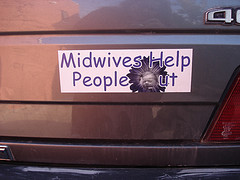 She asked me if I was comfortable with getting an ultrasound to help me feel better about how the baby is doing. I agreed and made an appointment for early next week. We tried to listen to the heartbeat but since I am still in my 10th week I knew it would be a slim shot. We didn’t get to hear it but I knew it wasn’t something to worry about. She did an exam to check my cervix and make sure it was closed and to look and see if there was any old/new blood. As she did the exam she walked me through the whole thing (even though I totally know what to expect). I still appreciate it because she is respecting me as a woman/mother. We set up an another appointment right before we move even though it is a few days earlier than it would normally be. I don’t think I’ll have prenatal care again until we get to England so having one more appointment just to check on me seemed important. They will have my file ready so I can take it to England with me. She was very encouraging about the prenatal care I will get in England. She worked with a midwife who was trained in England, so is familiar with the system and how it works.
She asked me if I was comfortable with getting an ultrasound to help me feel better about how the baby is doing. I agreed and made an appointment for early next week. We tried to listen to the heartbeat but since I am still in my 10th week I knew it would be a slim shot. We didn’t get to hear it but I knew it wasn’t something to worry about. She did an exam to check my cervix and make sure it was closed and to look and see if there was any old/new blood. As she did the exam she walked me through the whole thing (even though I totally know what to expect). I still appreciate it because she is respecting me as a woman/mother. We set up an another appointment right before we move even though it is a few days earlier than it would normally be. I don’t think I’ll have prenatal care again until we get to England so having one more appointment just to check on me seemed important. They will have my file ready so I can take it to England with me. She was very encouraging about the prenatal care I will get in England. She worked with a midwife who was trained in England, so is familiar with the system and how it works.
Even though I am a birth teacher and I know a lot of information about pregnancy and birth, I still need to be cared for. I don’t mean to imply that my husband doesn’t take care of me or look out for me, or that my friends and family don’t care. It’s just that there are many different hats I wear as a wife, friend, daughter, sister, mother etc. Do you know what I mean?
I left my appointment feeling relaxed, uplifted and cared for. And that is how it should be! I love midwifery care! I love that one of the values of midwifery care is to look at my whole person–not just the baby growing inside me. I find that I appreciate it more, the more children I have! There are many women who choose midwifery care (from Certified Nurse Midwives-CNMs) even though they want epidurals during their labors or need to have c-sections for one reason or another. You don’t have to be earthy-birthy to love the personalized care you often get from midwives. Their job is to be “with woman” and to care for her where she is–not make her super granola.
I’m sure that many of you have had similar experiences with ob/gyns but I have heard many, many stories where that is not the case. I just like to throw out an alternative for anyone who might be looking for something different, who might need some extra attention during pregnancy and motherhood. Midwives are wonderful and I hope that anyone who has been comtemplating switching practices might consider the midwifery model of care. Most CNMs also do well-woman visits too!
So what do you think? Does that kind of care sound appealing to you? What extras do you need when you are pregnant? Would you ever try going to a midwife? Why or why not?
- 1st photo courtesy of naturalkinds
- 2nd photo courtesy of RahelSharon
Share the fun: Email + Del.icio.us + Digg + Technorati

